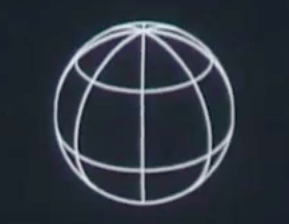In what may very well be the world’s first computer-generated animation, this video shows the motion of a box-like “satellite” orbiting a rotating sphere… Pixar, eat your heart out.
Created in 1963 by Edward E. Zajac, a programmer at Bell Labs from 1954 to 1983, the animation was made to demonstrate a theoretical satellite that used gyroscopes to maintain an Earth-facing orientation. Only a year after the launch of Telstar 1, the world’s first communications satellite (which just had its 50th anniversary) Bell Labs was very much invested in the development of satellite technology.
According to the description on the ATT Tech YouTube channel:
Zajac programmed the calculations in FORTRAN, then used a program written by Zajac’s colleague, Frank Sinden, called ORBIT. The original computations were fed into the computer via punch cards, then the output was printed onto microfilm using the General Dynamics Electronics Stromberg-Carlson 4020 microfilm recorder. All computer processing was done on an IBM 7090 or 7094 series computer.
I’d like to say that many Bothans died to bring us this information but… well, I guess I just did.
Footage courtesy of AT&T Archives and History Center in Warren, NJ. H/T to Paul Caridad at VisualNews.com.


That’s pretty nifty! Or, more appropriate to the time period, it’s “groovy” or “swell”.
In addition to being space buffs, my Dad and I were interested in computer graphics – we’d watch TV programs about how they did computer graphics. We have a show we taped on VHS in the late 80’s/early 90’s which showed how a computer company had “animated the story of a desk lamp and its child”. Little did we know….
A vector display, I had one computer like this once.
“a theoretical satellite that used gyroscopes to maintain an Earth-facing orientation.”
I think the whole point of the video is that it DOESN’T use gyroscopes to maintain an Earth-facing orientation but the gravity gradient of the satellite itself. That’s why the satellite only needs two gyros instead of three.